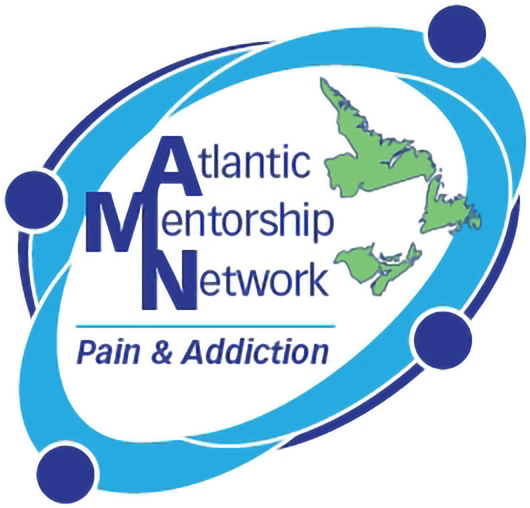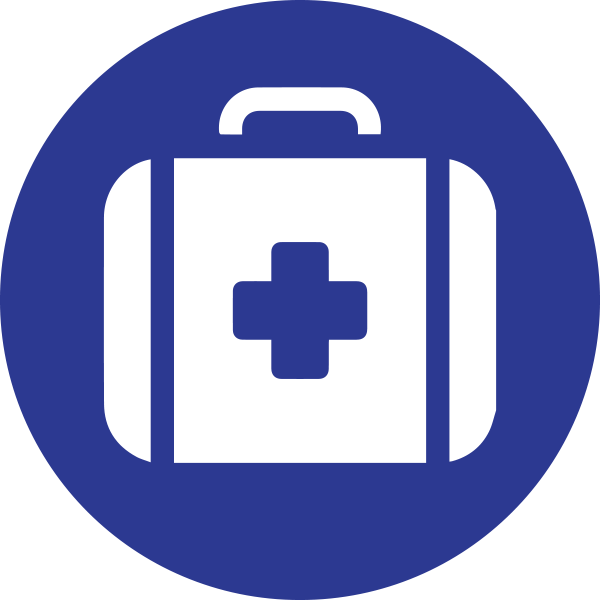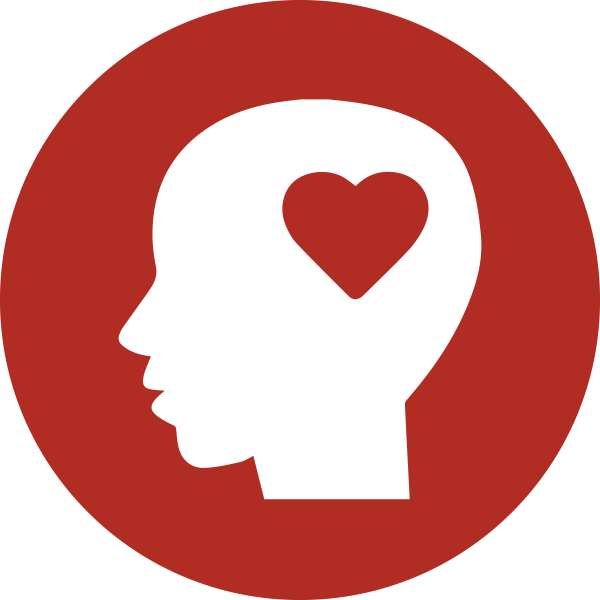Competencies
Foundational
1 Employ informed consent
Learning Objectives
- Identify treatment options that can be accessed in a comprehensive management plan for pain and addiction
- Support patients in the identification of individual goals of care
- Monitor effects of pain and addiction management
- Articulate the benefits and risks of treatment options
- Demonstrate an understanding of trauma-informed systems and trauma-informed approach
- Identify pain and addiction recovery supports that can be accessed within the community and be able to integrate these into a comprehensive treatment plan
- Consider contacting one key local support and Document the process of engagement
- Demonstrate knowledge of evidence-informed medical management of common substance use disorders
- Implement an individualized pain and addiction management plan that integrates the perspectives of patients, their social support systems, and health care providers in the context of available resources
Recommended Resources
- Toolkit for Custodians: A Guide to the Personal Health Information Act: (Document) This toolkit provides general commentary, templates and resources for individuals and organizations designated as “custodians” under the Personal Health Information Act.
- Good Practice Guidance-Sharing Information (Website) A review practice guidelines in protecting patient’s personal health information.
- Kirkwood, J et al. (2021). PEER simplified decision aid: chronic back pain treatment options in primary care (Article) A review for clinicians of the effectiveness of chronic back pain treatment options.
- Lindblad, AJ et al. (2020). PEER simplified decision aid: osteoarthritis treatment options in primary care (Article) A guide to assist clinicians in discussing non-operative treatment options with patients living with osteoarthritis-related pain.
- Mu, Alex et al. (2017). Pharmacological management of chronic neuropathic pain (Article) A clinical summary of the Canadian Pain Society revised consensus statement on the pharmacologic management of neuropathic pain
- Harm Reduction (Audio podcast) Teenagers and minimizing harm and potential danger.
- Trauma Informed Care (Audio podcast) How primary care clinicians can provide sensitive, trauma-informed care.
- Moving Toward a Recovery-Oriented System of Care (Document) Outlines the value of adopting a recovery approach, policies, and practices to implement that support principles of recovery.
- Choices Before Opioids (Document) A summary of non-opioid drugs to consider before considering opioids for treating non-cancer pain.
- Chapter 56: Kate the Therapist. Hard feelings, a community-based non-profit in Toronto de-stigmatizing mental health care (Audio podcast) Topics such as what is therapy, how do you find a therapist, how do we navigate the system, how to practice self-care are discussed.
- Wheel of Emotion (Tool) Tool that assists clients and individuals in recognizing and managing hard and good feelings.
- Pain Management in First Nations, Metis, and Inuit People: Through the Lens of Culture, Society and Medicine (Webinar) The dynamic in First Nations, Metis, & Inuit community between pain, trauma, and cultural adaptation.
- Practical Approach to Substance Use Disorders for the Family Physician (Document) A quick reference booklet to assist family physicians in recognizing and treating nicotine, alcohol, and opioids.
- Embracing Your Demons: An Overview of Acceptance and Commitment Therapy (Document) Essential components of Acceptance and Commitment Therapy (ACT) into a framework, with case studies to help illustrate the theory and practice of ACT.
- The Strong and Healthy Self (YouTube channel Video) A 5-minute Video focusing on the utility of distress in guiding valued living.
- Am I Broken? Understanding Unhealthy Coping (YouTube channel Video) Identifying different mental illnesses reflect different coping patterns.
- Survival Maps (YouTube channel Video) A 5-minute summary of how and why we create survival maps and what to do if they are not healthy ones.
- Getting out of our own way: Wish – Want – Commit (YouTube channel Video) A 4-minute video on if you get in your own way and want to know why and what to do about it.
- What is CBT? | Making Sense of Cognitive Behavioral Therapy (YouTube channel Video) CBT (cognitive behavioral therapy) is one of the most common treatments for a range of mental health problems, from anxiety, depression, bipolar, OCD or schizophrenia.
- CBT Skills Group (Documents & Videos) Information & resources for providers and patients on CBT Skills Groups program offered in BC. The program provides patients with practical tools to improve their mental health.
- What is Dialectical Behavior Therapy (DBT) (YouTube channel Video) An 8-minute summary of Dialectical Behavior Therapy, who it is designed to help, and what being in DBT treatment may look like.
- DBT – Skills in 5 Minutes or Less – Shireen Rizvi (YouTube channel Video) A series of mindfulness, distress tolerance, emotion regulation, and interpersonal effective skills in 5(ish) minutes or less!
- DBT Info and training options (Documents & Videos) Ten short videos showing the journey through the world of DBT and finding out if becoming a DBT therapist is suitable for you.
- Seek First to Understand: Navigating the Language of Persistent Pain (Video) This engaging presentation from an individual living with persistent pain examines the difference between what clinicians say and what a patient may hear.
- The Way Out: A Revolutionary, Scientifically Proven Approach to Healing Chronic Pain (Book) A groundbreaking mind-body protocol to heal chronic pain, backed by new research.
- MindWell (Free platform) 30 Day Mindfulness Challenge provides online training, live guided mindfulness practices, monthly webinars with experts, and a resource library.
- Therapy Assistance Online (TAO) (Website) Engaging and interactive online programs to learn life skills to help individuals bounce back from disappointments or stumbling blocks in life.
- Togetherall (Online community) Clinically moderated, online peer-to-peer mental health community that empowers individuals to seek and provide support 24/7 anonymously.
- Opioid Use Disorder Guideline (Video) Summarizing the PEER group’s most recently released guideline on Opioid Use Disorder (OUD).
- Managing Opioid Use Disorder in Primary Care (Video) A practical approach to simplified guidelines for Opioid Use Disorder (OUD).
- Pain Calculator (Website) A tool showing the potential benefits and possible harms associated with different treatments for pain and highlights key things to consider when choosing treatment, including the most common side effects or cost.
- Pain and Me (YouTube channel Video) A look at chronic pain, acceptance, and commitment.
- Psychology in People with Pain-Why it Matters-Part 1 (YouTube channel Video) How pain impacts and changes who we are.
- Psychology in People with Pain-Why it Matters-Part 2 (YouTube channel Video) A continued look at how pain impacts and changes who we are.
- How to Pace (Video) Why pacing is important in pain management and how you can get started.
- Anderson, P., O’Donnell, A., & Kaner, E. (2017). Managing alcohol use disorder in primary health care. Current psychiatry reports, 19(11), 1-10. (Article) Summarizes the impact and implementation of primary health care based screening and advice programs to reduce heavy drinking, as an evidence based component of managing alcohol use disorder in primary health care.
2 Individualize goals of care
Learning Objectives
- Identify treatment options that can be accessed in a comprehensive management plan for pain and addiction
- Support patients in the identification of individual goals of care
- Monitor effects of pain and addiction management
- Articulate the benefits and risks of treatment options
- Demonstrate an understanding of trauma-informed systems and trauma-informed approach
- Identify pain and addiction recovery supports that can be accessed within the community and be able to integrate these into a comprehensive treatment plan
- Consider contacting one key local support and Document the process of engagement
- Demonstrate knowledge of evidence-informed medical management of common substance use disorders
- Implement an individualized pain and addiction management plan that integrates the perspectives of patients, their social support systems, and health care providers in the context of available resources
Recommended Resources
- Toolkit for Custodians: A Guide to the Personal Health Information Act: (Document) This toolkit provides general commentary, templates and resources for individuals and organizations designated as “custodians” under the Personal Health Information Act.
- Good Practice Guidance-Sharing Information (Website) A review practice guidelines in protecting patient’s personal health information.
- Kirkwood, J et al. (2021). PEER simplified decision aid: chronic back pain treatment options in primary care (Article) A review for clinicians of the effectiveness of chronic back pain treatment options.
- Lindblad, AJ et al. (2020). PEER simplified decision aid: osteoarthritis treatment options in primary care (Article) A guide to assist clinicians in discussing non-operative treatment options with patients living with osteoarthritis-related pain.
- Mu, Alex et al. (2017). Pharmacological management of chronic neuropathic pain (Article) A clinical summary of the Canadian Pain Society revised consensus statement on the pharmacologic management of neuropathic pain
- Harm Reduction (Audio podcast) Teenagers and minimizing harm and potential danger.
- Trauma Informed Care (Audio podcast) How primary care clinicians can provide sensitive, trauma-informed care.
- Moving Toward a Recovery-Oriented System of Care (Document) Outlines the value of adopting a recovery approach, policies, and practices to implement that support principles of recovery.
- Choices Before Opioids (Document) A summary of non-opioid drugs to consider before considering opioids for treating non-cancer pain.
- Chapter 56: Kate the Therapist. Hard feelings, a community-based non-profit in Toronto de-stigmatizing mental health care (Audio podcast) Topics such as what is therapy, how do you find a therapist, how do we navigate the system, how to practice self-care are discussed.
- Wheel of Emotion (Tool) Tool that assists clients and individuals in recognizing and managing hard and good feelings.
- Pain Management in First Nations, Metis, and Inuit People: Through the Lens of Culture, Society and Medicine (Webinar) The dynamic in First Nations, Metis, & Inuit community between pain, trauma, and cultural adaptation.
- Practical Approach to Substance Use Disorders for the Family Physician (Document) A quick reference booklet to assist family physicians in recognizing and treating nicotine, alcohol, and opioids.
- Embracing Your Demons: An Overview of Acceptance and Commitment Therapy (Document) Essential components of Acceptance and Commitment Therapy (ACT) into a framework, with case studies to help illustrate the theory and practice of ACT.
- The Strong and Healthy Self (YouTube channel Video) A 5-minute Video focusing on the utility of distress in guiding valued living.
- Am I Broken? Understanding Unhealthy Coping (YouTube channel Video) Identifying different mental illnesses reflect different coping patterns.
- Survival Maps (YouTube channel Video) A 5-minute summary of how and why we create survival maps and what to do if they are not healthy ones.
- Getting out of our own way: Wish – Want – Commit (YouTube channel Video) A 4-minute video on if you get in your own way and want to know why and what to do about it.
- What is CBT? | Making Sense of Cognitive Behavioral Therapy (YouTube channel Video) CBT (cognitive behavioral therapy) is one of the most common treatments for a range of mental health problems, from anxiety, depression, bipolar, OCD or schizophrenia.
- CBT Skills Group (Documents & Videos) Information & resources for providers and patients on CBT Skills Groups program offered in BC. The program provides patients with practical tools to improve their mental health.
- What is Dialectical Behavior Therapy (DBT) (YouTube channel Video) An 8-minute summary of Dialectical Behavior Therapy, who it is designed to help, and what being in DBT treatment may look like.
- DBT – Skills in 5 Minutes or Less – Shireen Rizvi (YouTube channel Video) A series of mindfulness, distress tolerance, emotion regulation, and interpersonal effective skills in 5(ish) minutes or less!
- DBT Info and training options (Documents & Videos) Ten short videos showing the journey through the world of DBT and finding out if becoming a DBT therapist is suitable for you.
- Seek First to Understand: Navigating the Language of Persistent Pain (Video) This engaging presentation from an individual living with persistent pain examines the difference between what clinicians say and what a patient may hear.
- The Way Out: A Revolutionary, Scientifically Proven Approach to Healing Chronic Pain (Book) A groundbreaking mind-body protocol to heal chronic pain, backed by new research.
- MindWell (Free platform) 30 Day Mindfulness Challenge provides online training, live guided mindfulness practices, monthly webinars with experts, and a resource library.
- Therapy Assistance Online (TAO) (Website) Engaging and interactive online programs to learn life skills to help individuals bounce back from disappointments or stumbling blocks in life.
- Togetherall (Online community) Clinically moderated, online peer-to-peer mental health community that empowers individuals to seek and provide support 24/7 anonymously.
- Opioid Use Disorder Guideline (Video) Summarizing the PEER group’s most recently released guideline on Opioid Use Disorder (OUD).
- Managing Opioid Use Disorder in Primary Care (Video) A practical approach to simplified guidelines for Opioid Use Disorder (OUD).
- Pain Calculator (Website) A tool showing the potential benefits and possible harms associated with different treatments for pain and highlights key things to consider when choosing treatment, including the most common side effects or cost.
- Pain and Me (YouTube channel Video) A look at chronic pain, acceptance, and commitment.
- Psychology in People with Pain-Why it Matters-Part 1 (YouTube channel Video) How pain impacts and changes who we are.
- Psychology in People with Pain-Why it Matters-Part 2 (YouTube channel Video) A continued look at how pain impacts and changes who we are.
- How to Pace (Video) Why pacing is important in pain management and how you can get started.
- Anderson, P., O’Donnell, A., & Kaner, E. (2017). Managing alcohol use disorder in primary health care. Current psychiatry reports, 19(11), 1-10. (Article) Summarizes the impact and implementation of primary health care based screening and advice programs to reduce heavy drinking, as an evidence based component of managing alcohol use disorder in primary health care.
3 Use a patient-centered approach
Learning Objectives
- Identify treatment options that can be accessed in a comprehensive management plan for pain and addiction
- Support patients in the identification of individual goals of care
- Monitor effects of pain and addiction management
- Articulate the benefits and risks of treatment options
- Demonstrate an understanding of trauma-informed systems and trauma-informed approach
- Identify pain and addiction recovery supports that can be accessed within the community and be able to integrate these into a comprehensive treatment plan
- Consider contacting one key local support and Document the process of engagement
- Demonstrate knowledge of evidence-informed medical management of common substance use disorders
- Implement an individualized pain and addiction management plan that integrates the perspectives of patients, their social support systems, and health care providers in the context of available resources
Recommended Resources
- Toolkit for Custodians: A Guide to the Personal Health Information Act: (Document) This toolkit provides general commentary, templates and resources for individuals and organizations designated as “custodians” under the Personal Health Information Act.
- Good Practice Guidance-Sharing Information (Website) A review practice guidelines in protecting patient’s personal health information.
- Kirkwood, J et al. (2021). PEER simplified decision aid: chronic back pain treatment options in primary care (Article) A review for clinicians of the effectiveness of chronic back pain treatment options.
- Lindblad, AJ et al. (2020). PEER simplified decision aid: osteoarthritis treatment options in primary care (Article) A guide to assist clinicians in discussing non-operative treatment options with patients living with osteoarthritis-related pain.
- Mu, Alex et al. (2017). Pharmacological management of chronic neuropathic pain (Article) A clinical summary of the Canadian Pain Society revised consensus statement on the pharmacologic management of neuropathic pain
- Harm Reduction (Audio podcast) Teenagers and minimizing harm and potential danger.
- Trauma Informed Care (Audio podcast) How primary care clinicians can provide sensitive, trauma-informed care.
- Moving Toward a Recovery-Oriented System of Care (Document) Outlines the value of adopting a recovery approach, policies, and practices to implement that support principles of recovery.
- Choices Before Opioids (Document) A summary of non-opioid drugs to consider before considering opioids for treating non-cancer pain.
- Chapter 56: Kate the Therapist. Hard feelings, a community-based non-profit in Toronto de-stigmatizing mental health care (Audio podcast) Topics such as what is therapy, how do you find a therapist, how do we navigate the system, how to practice self-care are discussed.
- Wheel of Emotion (Tool) Tool that assists clients and individuals in recognizing and managing hard and good feelings.
- Pain Management in First Nations, Metis, and Inuit People: Through the Lens of Culture, Society and Medicine (Webinar) The dynamic in First Nations, Metis, & Inuit community between pain, trauma, and cultural adaptation.
- Practical Approach to Substance Use Disorders for the Family Physician (Document) A quick reference booklet to assist family physicians in recognizing and treating nicotine, alcohol, and opioids.
- Embracing Your Demons: An Overview of Acceptance and Commitment Therapy (Document) Essential components of Acceptance and Commitment Therapy (ACT) into a framework, with case studies to help illustrate the theory and practice of ACT.
- The Strong and Healthy Self (YouTube channel Video) A 5-minute Video focusing on the utility of distress in guiding valued living.
- Am I Broken? Understanding Unhealthy Coping (YouTube channel Video) Identifying different mental illnesses reflect different coping patterns.
- Survival Maps (YouTube channel Video) A 5-minute summary of how and why we create survival maps and what to do if they are not healthy ones.
- Getting out of our own way: Wish – Want – Commit (YouTube channel Video) A 4-minute video on if you get in your own way and want to know why and what to do about it.
- What is CBT? | Making Sense of Cognitive Behavioral Therapy (YouTube channel Video) CBT (cognitive behavioral therapy) is one of the most common treatments for a range of mental health problems, from anxiety, depression, bipolar, OCD or schizophrenia.
- CBT Skills Group (Documents & Videos) Information & resources for providers and patients on CBT Skills Groups program offered in BC. The program provides patients with practical tools to improve their mental health.
- What is Dialectical Behavior Therapy (DBT) (YouTube channel Video) An 8-minute summary of Dialectical Behavior Therapy, who it is designed to help, and what being in DBT treatment may look like.
- DBT – Skills in 5 Minutes or Less – Shireen Rizvi (YouTube channel Video) A series of mindfulness, distress tolerance, emotion regulation, and interpersonal effective skills in 5(ish) minutes or less!
- DBT Info and training options (Documents & Videos) Ten short videos showing the journey through the world of DBT and finding out if becoming a DBT therapist is suitable for you.
- Seek First to Understand: Navigating the Language of Persistent Pain (Video) This engaging presentation from an individual living with persistent pain examines the difference between what clinicians say and what a patient may hear.
- The Way Out: A Revolutionary, Scientifically Proven Approach to Healing Chronic Pain (Book) A groundbreaking mind-body protocol to heal chronic pain, backed by new research.
- MindWell (Free platform) 30 Day Mindfulness Challenge provides online training, live guided mindfulness practices, monthly webinars with experts, and a resource library.
- Therapy Assistance Online (TAO) (Website) Engaging and interactive online programs to learn life skills to help individuals bounce back from disappointments or stumbling blocks in life.
- Togetherall (Online community) Clinically moderated, online peer-to-peer mental health community that empowers individuals to seek and provide support 24/7 anonymously.
- Opioid Use Disorder Guideline (Video) Summarizing the PEER group’s most recently released guideline on Opioid Use Disorder (OUD).
- Managing Opioid Use Disorder in Primary Care (Video) A practical approach to simplified guidelines for Opioid Use Disorder (OUD).
- Pain Calculator (Website) A tool showing the potential benefits and possible harms associated with different treatments for pain and highlights key things to consider when choosing treatment, including the most common side effects or cost.
- Pain and Me (YouTube channel Video) A look at chronic pain, acceptance, and commitment.
- Psychology in People with Pain-Why it Matters-Part 1 (YouTube channel Video) How pain impacts and changes who we are.
- Psychology in People with Pain-Why it Matters-Part 2 (YouTube channel Video) A continued look at how pain impacts and changes who we are.
- How to Pace (Video) Why pacing is important in pain management and how you can get started.
- Anderson, P., O’Donnell, A., & Kaner, E. (2017). Managing alcohol use disorder in primary health care. Current psychiatry reports, 19(11), 1-10. (Article) Summarizes the impact and implementation of primary health care based screening and advice programs to reduce heavy drinking, as an evidence based component of managing alcohol use disorder in primary health care.
4 Demonstrate flexibility
Learning Objectives
- Identify treatment options that can be accessed in a comprehensive management plan for pain and addiction
- Support patients in the identification of individual goals of care
- Monitor effects of pain and addiction management
- Articulate the benefits and risks of treatment options
- Demonstrate an understanding of trauma-informed systems and trauma-informed approach
- Identify pain and addiction recovery supports that can be accessed within the community and be able to integrate these into a comprehensive treatment plan
- Consider contacting one key local support and Document the process of engagement
- Demonstrate knowledge of evidence-informed medical management of common substance use disorders
- Implement an individualized pain and addiction management plan that integrates the perspectives of patients, their social support systems, and health care providers in the context of available resources
Recommended Resources
- Toolkit for Custodians: A Guide to the Personal Health Information Act: (Document) This toolkit provides general commentary, templates and resources for individuals and organizations designated as “custodians” under the Personal Health Information Act.
- Good Practice Guidance-Sharing Information (Website) A review practice guidelines in protecting patient’s personal health information.
- Kirkwood, J et al. (2021). PEER simplified decision aid: chronic back pain treatment options in primary care (Article) A review for clinicians of the effectiveness of chronic back pain treatment options.
- Lindblad, AJ et al. (2020). PEER simplified decision aid: osteoarthritis treatment options in primary care (Article) A guide to assist clinicians in discussing non-operative treatment options with patients living with osteoarthritis-related pain.
- Mu, Alex et al. (2017). Pharmacological management of chronic neuropathic pain (Article) A clinical summary of the Canadian Pain Society revised consensus statement on the pharmacologic management of neuropathic pain
- Harm Reduction (Audio podcast) Teenagers and minimizing harm and potential danger.
- Trauma Informed Care (Audio podcast) How primary care clinicians can provide sensitive, trauma-informed care.
- Moving Toward a Recovery-Oriented System of Care (Document) Outlines the value of adopting a recovery approach, policies, and practices to implement that support principles of recovery.
- Choices Before Opioids (Document) A summary of non-opioid drugs to consider before considering opioids for treating non-cancer pain.
- Chapter 56: Kate the Therapist. Hard feelings, a community-based non-profit in Toronto de-stigmatizing mental health care (Audio podcast) Topics such as what is therapy, how do you find a therapist, how do we navigate the system, how to practice self-care are discussed.
- Wheel of Emotion (Tool) Tool that assists clients and individuals in recognizing and managing hard and good feelings.
- Pain Management in First Nations, Metis, and Inuit People: Through the Lens of Culture, Society and Medicine (Webinar) The dynamic in First Nations, Metis, & Inuit community between pain, trauma, and cultural adaptation.
- Practical Approach to Substance Use Disorders for the Family Physician (Document) A quick reference booklet to assist family physicians in recognizing and treating nicotine, alcohol, and opioids.
- Embracing Your Demons: An Overview of Acceptance and Commitment Therapy (Document) Essential components of Acceptance and Commitment Therapy (ACT) into a framework, with case studies to help illustrate the theory and practice of ACT.
- The Strong and Healthy Self (YouTube channel Video) A 5-minute Video focusing on the utility of distress in guiding valued living.
- Am I Broken? Understanding Unhealthy Coping (YouTube channel Video) Identifying different mental illnesses reflect different coping patterns.
- Survival Maps (YouTube channel Video) A 5-minute summary of how and why we create survival maps and what to do if they are not healthy ones.
- Getting out of our own way: Wish – Want – Commit (YouTube channel Video) A 4-minute video on if you get in your own way and want to know why and what to do about it.
- What is CBT? | Making Sense of Cognitive Behavioral Therapy (YouTube channel Video) CBT (cognitive behavioral therapy) is one of the most common treatments for a range of mental health problems, from anxiety, depression, bipolar, OCD or schizophrenia.
- CBT Skills Group (Documents & Videos) Information & resources for providers and patients on CBT Skills Groups program offered in BC. The program provides patients with practical tools to improve their mental health.
- What is Dialectical Behavior Therapy (DBT) (YouTube channel Video) An 8-minute summary of Dialectical Behavior Therapy, who it is designed to help, and what being in DBT treatment may look like.
- DBT – Skills in 5 Minutes or Less – Shireen Rizvi (YouTube channel Video) A series of mindfulness, distress tolerance, emotion regulation, and interpersonal effective skills in 5(ish) minutes or less!
- DBT Info and training options (Documents & Videos) Ten short videos showing the journey through the world of DBT and finding out if becoming a DBT therapist is suitable for you.
- Seek First to Understand: Navigating the Language of Persistent Pain (Video) This engaging presentation from an individual living with persistent pain examines the difference between what clinicians say and what a patient may hear.
- The Way Out: A Revolutionary, Scientifically Proven Approach to Healing Chronic Pain (Book) A groundbreaking mind-body protocol to heal chronic pain, backed by new research.
- MindWell (Free platform) 30 Day Mindfulness Challenge provides online training, live guided mindfulness practices, monthly webinars with experts, and a resource library.
- Therapy Assistance Online (TAO) (Website) Engaging and interactive online programs to learn life skills to help individuals bounce back from disappointments or stumbling blocks in life.
- Togetherall (Online community) Clinically moderated, online peer-to-peer mental health community that empowers individuals to seek and provide support 24/7 anonymously.
- Opioid Use Disorder Guideline (Video) Summarizing the PEER group’s most recently released guideline on Opioid Use Disorder (OUD).
- Managing Opioid Use Disorder in Primary Care (Video) A practical approach to simplified guidelines for Opioid Use Disorder (OUD).
- Pain Calculator (Website) A tool showing the potential benefits and possible harms associated with different treatments for pain and highlights key things to consider when choosing treatment, including the most common side effects or cost.
- Pain and Me (YouTube channel Video) A look at chronic pain, acceptance, and commitment.
- Psychology in People with Pain-Why it Matters-Part 1 (YouTube channel Video) How pain impacts and changes who we are.
- Psychology in People with Pain-Why it Matters-Part 2 (YouTube channel Video) A continued look at how pain impacts and changes who we are.
- How to Pace (Video) Why pacing is important in pain management and how you can get started.
- Anderson, P., O’Donnell, A., & Kaner, E. (2017). Managing alcohol use disorder in primary health care. Current psychiatry reports, 19(11), 1-10. (Article) Summarizes the impact and implementation of primary health care based screening and advice programs to reduce heavy drinking, as an evidence based component of managing alcohol use disorder in primary health care.
5 Identify and overcome barriers to care
Learning Objectives
- Assess for motivation to change and demonstrate skills to enhance patient participation
- Illustrate harm reduction at the individual level and the broader community and societal levels
- Describe how intrapersonal/interpersonal, system factors, and cultural factors contribute to stigma
- Discuss the role of stigma in the assessment and management of pain and addiction
6 Promote self-efficacy
Learning Objectives
- Explain how health promotion strategies are important to the management of pain and addiction
- Explain how patient agency and self-management skills are critical for effective pain management and addiction recovery
- Describe common disorders that co-occur with pain and addiction
- Describe common evidence-based theoretical frameworks for psychosocial counseling
- Describe social determinants of health and identify local, provincial, and national systems and services that address them
- Develop a resource map to aid in communicating with local agencies
7 Promote wellness
Learning Objectives
- Explain how health promotion strategies are important to the management of pain and addiction
- Explain how patient agency and self-management skills are critical for effective pain management and addiction recovery
- Describe common disorders that co-occur with pain and addiction
- Describe common evidence-based theoretical frameworks for psychosocial counseling
- Describe social determinants of health and identify local, provincial, and national systems and services that address them
- Develop a resource map to aid in communicating with local agencies
8 Understand the terminology and why the terminology changes
Learning Objectives
- Compare and contract DSM-IV and DSM-5
- Evolution of language used to describe chronic pain using the ICD11 classification system
9 Understand each role of the circle of care
Learning Objectives
- Explain the development of an inter-professional team approach.
- Understand the roles within a multi-disciplinary team
- Describe the role and contribution of each team member within a patient’s care plan
10 Be aware of avenues of support
Learning Objectives
- Explain the development of an inter-professional team approach.
- Understand the roles within a multi-disciplinary team
- Describe the role and contribution of each team member within a patient’s care plan
11 Understand the physiology and natural history of addiction by substance
Learning Objectives
- Describe the short and long-term effects that common substances have on the human body
- Describe and differentiate the withdrawal states of common substances
Recommended Resources
- J. H. (2016). Substance use disorders (Document)
A clinical overview of substance use disorders, focusing on epidemiology, prevention, diagnosis, complications, and management.
- Practical Approach to Substance Use Disorder for the Family Physician (Document)
A quick reference Booklet designed to help family physicians at all stages recognize and treat the most common substance use disorders that also cause the greatest population health effects—nicotine, alcohol, and opioids.
12 Understand the role of neuroplasticity
Learning Objectives
- Understand the role of neuroplasticity in the development and maintenance of chronic pain
Recommended Resources
- Neuroplasticity (YouTube channel Video)
This brief video outlines the principles of neuroplasticity.
- Michaels, T. I., Stone, E., Singal, S., Novakovic, V., Barkin, R. L., & Barkin, S. (2021). Brain reward circuitry: The overlapping neurobiology of trauma and substance use disorders (Article)
This review provides an overview of brain reward circuitry and its relation to the neurobiology, symptomology, and phenomenology of trauma and substance use.
- Elman, I., & Borsook, D. (2016). Common brain mechanisms of chronic pain and addiction (Article)
This article looks at the existence of similar neuroadaptations in chronic pain and addictions.
Advanced
1 Understand and promote patient agency
Learning Objectives
- Demonstrate the inclusion of patients and others in knowledge sharing and treatment planning
- Describe how the loss of connection interferes with recovery
- Describe how peer support and other spiritual interventions can aid recovery.
- Illustrate harm reduction at the individual level and the broader community and societal levels
2 Be an advocate
Learning Objectives
- Advocate within and outside the health care system for people experiencing pain and addictive disorders
Recommended Resources
- Overdose (Book)
A look at Canada’s opioid crisis and unveils the many complexities of the crisis and offers a new way forward—one that may save thousands of lives.
3 Be a mentor
Learning Objectives
- Demonstrate the ability to be a Medical Expert, Communicator, Collaborator, Leader, Health Advocate, Scholar, and Professional
Recommended Resources
- CanMEDS Framework (Website)
The CanMEDS framework identifies and describes the abilities physicians require to effectively meet the health care needs of the people they serve.






